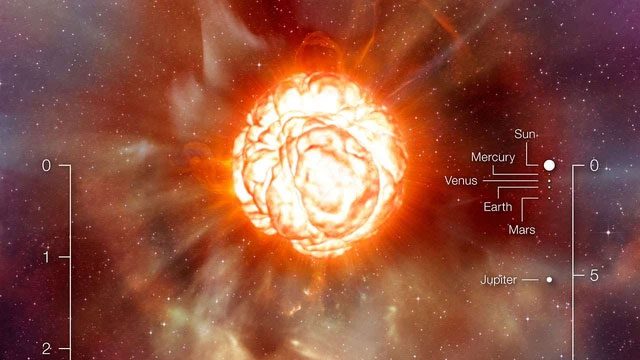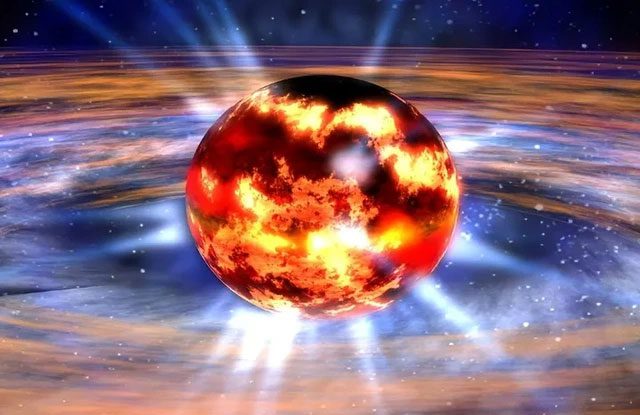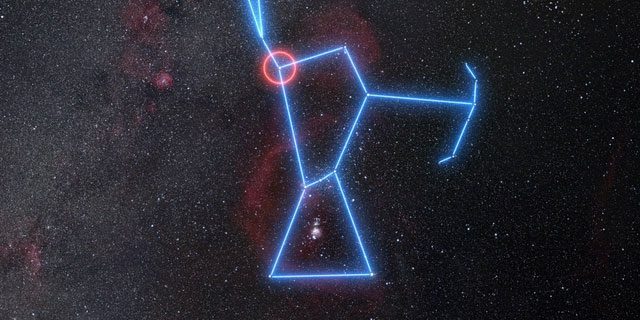At the edge of the universe, the star cluster Betelgeuse is quietly burning, known for its immense power and strange energy. However, the threat posed by this star cluster has raised concerns among scientists. The latest research results have finally been published, revealing the potential threat that Betelgeuse poses to Earth.
The name Betelgeuse comes from the constellation in which it is located – Ursa Major. Ursa Major is a well-known constellation in the northern hemisphere and is considered an important symbol in many ancient cultures. In traditional Chinese culture, Ursa Major is referred to as “Qīxīng Běidǒu” and is viewed as a symbol of good fortune and direction.
Betelgeuse shines brightly, standing out in the night sky. Ancient navigators and explorers relied on the position of Betelgeuse to determine their routes and timing. They understood that Betelgeuse’s position changes with the seasons, helping them gauge the passage of time.

In ancient times, Betelgeuse played a crucial role in time prediction and countdowns. Its variations in brightness and position helped humans keep track of time and anticipate changes in natural phenomena.
In addition to its usefulness in navigation and time prediction, Betelgeuse is also linked to agriculture and predicting natural events. By observing the position and brightness changes of Betelgeuse, farmers could infer changes in nature. For example, when Betelgeuse is in a specific position, people know it marks the beginning of the rainy season. When Betelgeuse disappears from the starry sky, it signifies the arrival of autumn.
However, with advancements in technology, humans have gradually stopped relying on stars for time predictions. Modern science has developed accurate methods for observing and predicting time, such as calendars and clocks. People can easily obtain precise time information through mobile phones or computers. Therefore, the function of Betelgeuse has diminished to some extent.

Scientists are closely monitoring the evolution of Betelgeuse and are trying to predict its future fate.
The immense energy released from the Betelgeuse explosion
Betelgeuse is a star system that has been widely studied. It comprises four stars, three of which form a bright diagonal triangle, while the fourth star is slightly above it. This system has garnered significant interest in the scientific community due to the potential impact of the immense energy it releases on Earth.
Betelgeuse is approximately 1,500 light-years away from Earth, meaning that what we observe about Betelgeuse actually occurred 1,500 years ago. However, even the light from the past reveals a beautiful picture.
Most prominent among these is the central star, Betugus. It is a massive blue supergiant star considered a candidate for an imminent supernova. A supernova is the energy released when a star explodes, making it brighter than all the other stars in the galaxy for a brief period. If it explodes as a supernova, the energy release will be unprecedented.

Despite being very far from us, scientists have noted that it has some effect on Earth. Over the past few decades, researchers have conducted extensive studies to find ways to prevent Betelgeuse from negatively impacting our planet.
However, some scientists point out that although supernova explosions release an immense amount of energy, this does not necessarily mean Earth will be threatened. Betugus is far enough from Earth that even if a supernova occurs, the impact of its radiation and shock waves will be greatly diminished by the time they reach us. Earth’s atmosphere and magnetic field also serve as protection, mitigating the effects of cosmic radiation on us.
Even if the energy release has only a minor impact on Earth, studying Betelgeuse remains highly significant. By observing and analyzing the evolution of Betugus, scientists can gain a better understanding of the life cycles of stars as well as the laws of cosmic evolution. This is key to our understanding of the origins and future development of the universe.

With the continuous development of the latest technology, humanity is striving to find ways to cope with the threat from Betelgeuse. One crucial technology is the development of space telescopes. By positioning advanced telescopes in space, scientists can better observe and study the activities of Betelgeuse. They can monitor the changes of stars and predict potential explosive activities. In this way, humans can take proactive steps to mitigate potential impacts on the planet.
Research on Betelgeuse may also help explore the origins of ourselves. Stars are considered one of the nurseries of life in the universe, generating a vast amount of essential elements like oxygen and iron through nuclear fusion. These elements are released into space when a star dies and eventually form Earth and other planets. Studying Betelgeuse not only unveils the mysteries of the universe but also helps us understand our own existence.
The immense energy release from Betelgeuse will not pose a direct threat to Earth. However, it remains an extremely important star system deserving of study. By researching Betelgeuse, scientists can gain a deeper understanding of the evolution of the universe and the origins of ourselves. Such research not only expands our knowledge boundaries but also provides a solid foundation for humanity’s exploration and development in the future.


















































